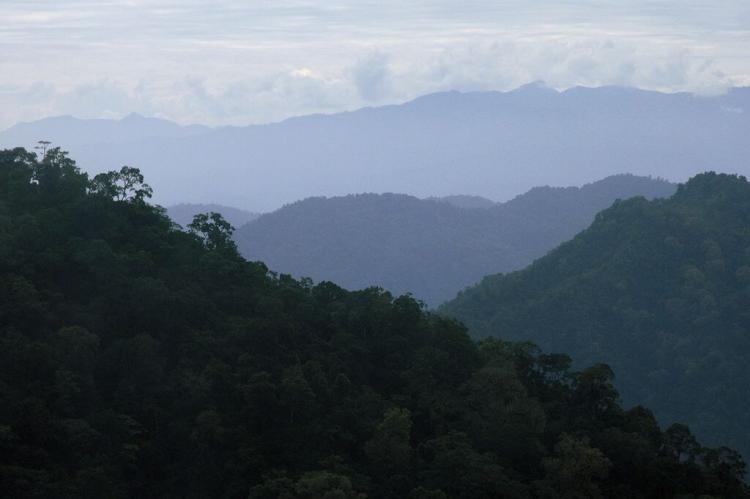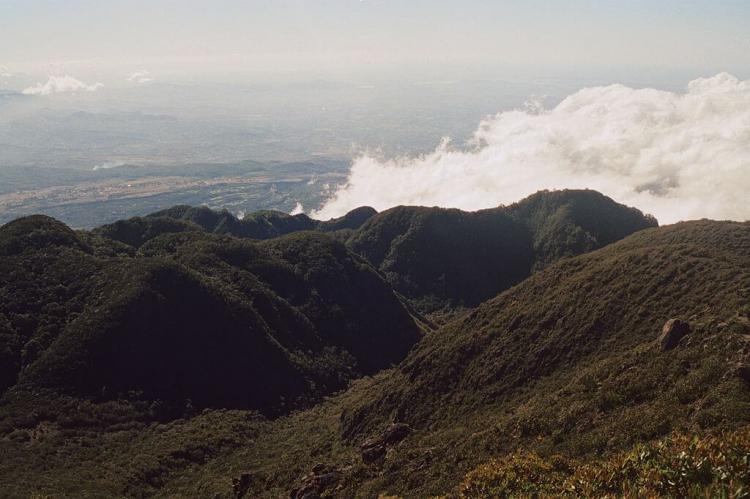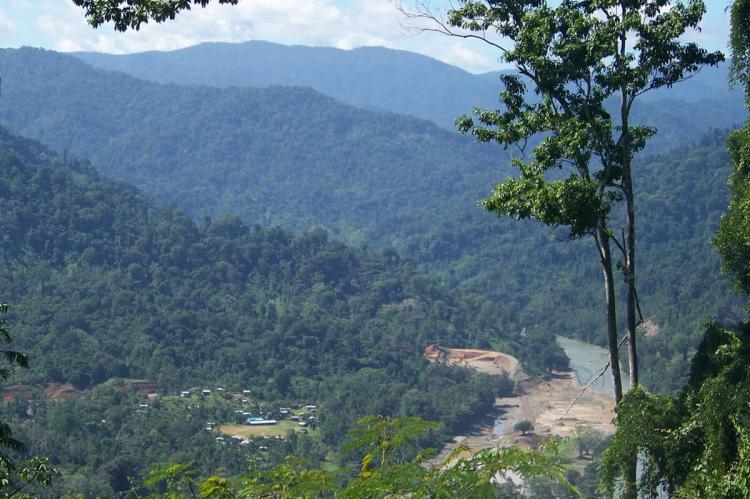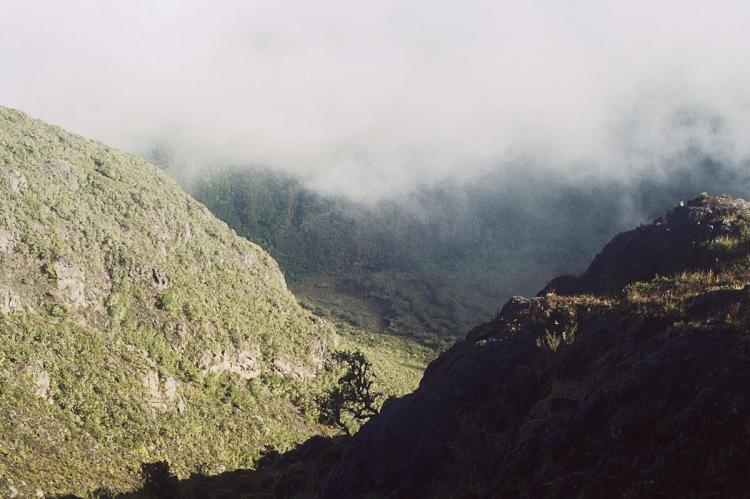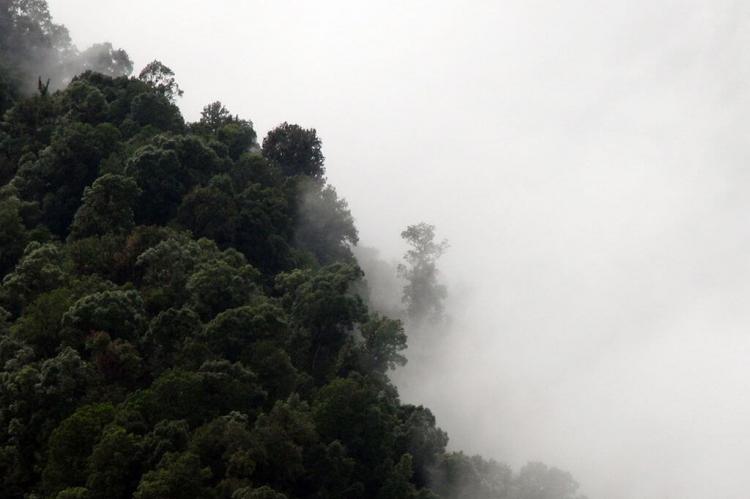La Amistad International Park and Biosphere Reserve (Costa Rica, Panama)
La Amistad International Park is a Transboundary Protected Area that extends along the border between Costa Rica and Panama, which, along with the surrounding Biosphere Reserves, preserves a significant tract of tropical forest known for its extraordinary biodiversity and endemism.
La Amistad International Park
La Amistad International Park is a Transboundary Protected Area that extends along the border between Costa Rica and Panama, the management of which is shared by both countries. Located within the Cordillera de Talamanca, the park contains one of Central America's major remaining blocks of natural forest.
Covering 401,000 ha (991,000 acres), La Amistad is the largest nature reserve in Central America. Along with the surrounding Biosphere Reserves, it preserves a significant tract of tropical forest known for its extraordinary biodiversity and endemism. The protected area is part of the Talamancan Montane forests ecoregion.
Also known as the "La Amistad International Peace Park," as a symbol of peace and cooperation between Costa Rica and Panama, the protected area is within the Bocas del Toro and Chiriquí provinces of Panama and the San José, Cartago, Limón, and Puntarenas provinces of Costa Rica.
The International Park is a World Heritage Site. Inscribed in 1983 and extended in 1990 as a transboundary property: Talamanca Range-La Amistad Reserves / La Amistad National Park.
...the Talamanca Range-La Amistad Reserves / La Amistad National Park covers large tracts of the highest and wildest non-volcanic mountain range in Central America and is one of that region's outstanding conservation areas...
Home to several indigenous tribes, the La Amistad site is a uniquely biodiverse land bridge where flora and fauna from both North America and South America interbreed and intermingle in this largest remaining natural forest in Central America. The park's ecosystem includes unforested peatland, páramo, meadows, cloud forests and rainforests.
The park's buffer zone includes coffee and beef producers and indigenous subsistence farmers. As a consequence of the difficulty of the terrain, the park is relatively unexplored, and the Natural History Museum London, INBio and the University of Panama have led the only substantial scientific explorations deep into the park.
The International Park has approximately 600 bird species, including the three-wattled bellbird, resplendent quetzal, yellow-green finch and bare-necked umbrellabird. In addition, five species of big cats roam the park: pumas, ocelots, margay, jaguars and jaguarundis.
More than 10,000 flowering plants have been recorded within the park. In addition, many of the region's large mammals are found here. Overall, 215 species of mammals have been recorded, along with approximately 250 reptile and amphibian species and 115 species of freshwater fish.
La Amistad Biosphere Reserve (Costa Rica)
The La Amistad Biosphere Reserve (Costa Rica) lies in the foothills and mountains of the Cordillera de Talamanca, between the mountain ranges of Panama and Costa Rica.
The Cordillera de Talamanca is the highest and wildest non-volcanic mountain range in Central America, formed by orogenic activity, which created the land dividing the Pacific Ocean and the Caribbean Sea.
The Biosphere Reserve includes the Barbilla National Park as well as the Chirripó Indigenous Reserve,
Of the 20 life zones of Costa Rica, at least eight occur in the park, which includes lowland tropical wet rainforest to cloud and paramo forests. However, the most prominent crest lies within the montane rainforest life zone, characterized by mixed oak forest, the most extensive tracts of virgin forest in Costa Rica.
Frequent stands of paramo, swamps and cold marshes exist on high peaks along the ridge over 3,000 m (9,800 ft) above sea level. The paramo on Mt. Kamuk contains the most varied vegetation in the Talamanca Range.
Signs of tapirs (Tapirus terrestris), possibly of a species unrecorded for Costa Rica, are abundant near the Panamanian border. In addition, Puma (Felis concolor), ocelot (F. pardalis), jaguar (F. yagouaroundi), Central American squirrel monkey (Saimiri oerstedii), and Geoffroy's spider monkey (Ateles geoffroyi) are found within the Biosphere Reserve.
Man's impact on the Indian reservations is considerable, with about 24,950 (2002) people maintaining their traditional lifestyles with free-range grazing, hunting, fishing and use of medicinal plants. This site forms part of La Amistad International Park along with Panama.
La Amistad Biosphere Reserve (Panama)
The La Amistad Biosphere Reserve (Panama) is situated northwest of Panama, bordering Costa Rica and the Caribbean Sea. This site forms part of La Amistad International Park along with Costa Rica.
It comprises various habitats, ranging from low, humid mountain forests to mangrove forests and coral reefs. In the highlands, some important lagoons have international recognition under the Ramsar Convention as habitats for migratory bird species. It's also an endemic area of mammals, reptiles, amphibians, and fish.
The unique volcano of Panama, Baru, is also situated in the area. In addition, various representative species of the Atlantic Panamanian mangrove associations are found in the lowlands.
Over 150,000 people live in the buffer zone and the transition area. They live from agriculture, cattle raising, forestry, fisheries and ecotourism.
Some indigenous ethnic groups, such as Ngóbe, Teribe, Buglé and Bribri, live in the buffer area. They have conserved their language, cultures, traditions and religions. They also practice traditional forms of agriculture and subsistence hunting.
